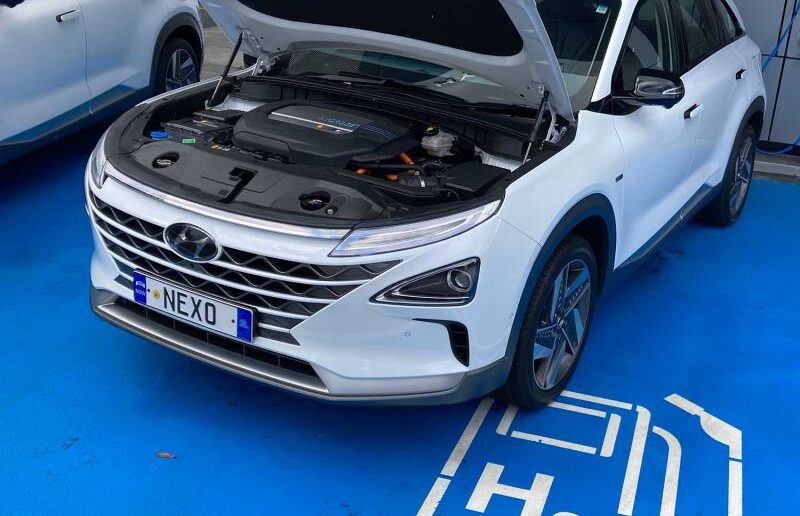Innovation
Researchers in the U.S. have developed a new sensor that could enable the practical and low-cost detection of low concentrations of methane gas.
“Detecting methane leaks is critical to the oil and gas industry for both environmental and economic reasons because natural gas is mainly composed of methane,” said Mark Zondlo, leader of the Princeton University research team that developed the sensor.
In The Optical Society journal Optics Express, researchers from Princeton University and the U.S. Naval Research Laboratory demonstrate their new gas sensor, which uses an interband cascade light-emitting ... more
Petroleum engineers develop tech to simulate mechanical properties of subterranean rock
A test facility simulating rock positions was developed at Samara State Technical University (Samara Polytech) in Samara, Russia. It allows many experiments with the core material to be conducted under conditions close to rock positions at different depths.
The original facility developed at Samara Polytech will help to explore the Earth's interior.
Under laboratory conditions, the mechanism recreates the physical parameters (for example, pressure and temperature) of a deposit located at multiple depths.
The technology makes it possible to accurately determine the mechanical properties of a rock such ... more
3-D model shows off the insides of a giant permafrost crater
Researchers from the Oil and Gas Research Institute of the Russian Academy of Sciences (OGRI) and the Skolkovo Institute of Science and Technology (Skoltech) have surveyed the newest known 30-meter deep gas blowout crater on the Yamal Peninsula, which formed in the summer of 2020. The paper was published in the journal Geosciences.
Giant craters in the Russian Arctic, thought to be the remnants of powerful gas blowouts, first attracted worldwide attention in 2014, when the 20 to 40-meter wide Yamal Crater was found quite close to the Bovanenkovo gas field. The prevailing hypothesis is that these craters ar... more
The ‘Internet of Things’ goes underwater
James Cook University (JCU) scientists believe the emerging ‘Internet of Underwater Things’ has significant potential – but serious issues need to be overcome first.
Dr Mostafa Rahimi Azghadi is a Senior Lecturer in Electrical and Electronic Engineering at JCU’s College of Science and Engineering.
He said the Internet of Things (IoT) can be broadly described as infrastructure that connects equipment and other devices to the Internet and to one another.
“The IoT is expected to transform and revolutionise the way we live in almost every technological area. It’s advancing at a truly astonishing... more
Addressing wellbore instability for safer operations
In Australia, wells are typically between 2,000 and 4,000 metres deep, but globally, wells beyond 10,000 metres are gradually becoming more common. These depths are demanding innovative measures to ensure the safety of operations in increasingly challenging production locations.
Drilling, the first step in constructing a well, presents a number of potential risks to well integrity. Mud weight is vital in maintaining well integrity before the casing is cemented. If the mud pressure is less than the formation pore pressure, formation fluid may enter the well. Uncontrolled influx of large volumes of hydrocarbons... more
Drilling Australia’s first offshore CO2 appraisal well
The CarbonNet Project, jointly funded by the Federal and Victorian Governments, is investigating the potential for a commercial-scale carbon capture and storage (CCS) network.
Should the CarbonNet Project proceed, by 2030 the network will deliver carbon dioxide (CO2) captured from a range of industries based in Victoria’s Latrobe Valley, via an underground pipeline, to offshore storage sites in Bass Strait.
The first storage site is known as Pelican, which has at least 125 million tonnes capacity at P90 and at five million tonnes per year. Pelican will have three injection wells and one observation well.... more
Protecting hazardous sites from risks
From onshore pipelines, refineries and office buildings to offshore platforms and vessels, the oil and gas industry has a range of expensive and critical assets which require protection from unwanted damage or intrusion.
Operators commonly use a range of security measures including closed-circuit television (CCTV) surveillance and unmanned aerial vehicles (UAV) to safeguard their sites.
For oil and gas facilities, operators may employ intrusion detection which uses a variety of technologies, such as active fences equipped with fibre-optic and microphonic cable to detect vibrations and sound; infrared and m... more















